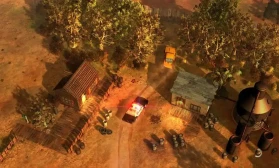Title: Weaving Realities: The "Spider Web Shelter Sign Installer Simulator VR" Mount Missions Expansion Deep Dive
Tags: VR Gaming, Simulation, Spider-Man, Physics Simulator, Immersive Gameplay, Expansion Pack, Superhero Games, Absurdist Comedy, Open-World
The world of virtual reality simulation games is a bizarre and wonderful place. We have meticulously recreated the mundane tasks of farming, trucking, and house renovation. We’ve even soared through fantastical skies and battled dragons. But rarely does a title come along that so perfectly marries the utterly ridiculous with the surprisingly technical, the superheroic with the blue-collar. The original Spider Web Shelter Sign Installer Simulator VR was one such gem—a game that asked a simple question: "What if Spider-Man’s day job was in urban advertising?" Its success was a testament to the joy of its core premise: a deeply satisfying web-swinging physics engine applied to the oddly specific task of installing giant signs on skyscrapers. Now, the Mount Missions Expansion has arrived, and it doesn’t just add new content; it fundamentally redefines and elevates the entire experience, pushing the concept to vertigo-inducing new heights.

The core gameplay loop remains blissfully intact. You are a certified—or perhaps just recklessly confident—Sign Installation Technician equipped with a pair of web-shooters, a tool belt stocked with bolts, brackets, and a power drill, and a seemingly endless supply of synthetic webbing. A job board in your grimy downtown office details client requests: install the new "Grand Bean Coffee" logo on the 50th-floor parapet, mount the massive, neon "Zenith Bank" letters on a steel girder frame, or carefully hang a delicate, backlit plastic sign for a new sushi restaurant. The brilliance of the simulation has always been in its details. You can’t just haphazardly slap a sign onto a wall. You must first use your laser measurer to pinpoint drill locations, ensuring the sign will be level. You then web-sling your way to the spot, often while carrying a heavy, unwieldy sign panel that acts as a sail in the wind, dramatically affecting your swing physics. Drilling the anchor points requires a steady VR hand, and finally, securing the sign involves a tactile process of bolting and tightening that is inexplicably gratifying. One wrong move, and you send a $10,000 piece of acrylic tumbling into the traffic below, followed by an angry call from your boss and a docked paycheck.
The Mount Missions Expansion understands that the original game’s charm was this precarious balance between superhuman ability and mundane, painstaking work. Instead of abandoning this formula, the expansion multiplies it by a factor of ten. The first and most significant addition is the new biome: the treacherous, snow-capped peaks of Mount Kronos. This is not a dense urban jungle but a vast, natural one. The "skyscrapers" here are jagged cliff faces, precarious rock spires, and the sheer, icy walls of a massive dam. The "clients" are no longer just coffee shops and banks; they are extreme sports brands, national park services, and secretive research facilities wanting their logos and communication arrays placed in the most inaccessible locations imaginable.
This new environment completely transforms the game’s rhythm. Web-swinging, once a method of elegant, rhythmic traversal between glass and steel, becomes a life-or-death exercise in calculated risk. Your webbing doesn’t stick to clouds. You need to find actual rock faces, overhangs, or specifically placed anchor points to swing from. The expansion introduces new equipment to manage these challenges. Ice-claw attachments for your boots allow you to kick into icy surfaces for a temporary hold, but they slow you down. A portable piton launcher lets you create your own anchor points on sheer rock, but you have a limited supply, forcing you to plan your route up a cliff face like a mountaineer. The wind is a far more potent and unpredictable foe here, howling through canyons and threatening to send you and your precious cargo—a giant "Vortex Energy Drink" snowboard—flying into the abyss.
The new missions are brilliantly designed to exploit this hostile new playground. One early task has you installing a weather sensor array on the summit of a needle-like peak. The mission isn't just about the installation; it's about the grueling, terrifying ascent, carrying a fragile package while navigating howling winds and limited web-swinging opportunities. Another standout mission involves installing navigation lights and reflective signs on a massive hydroelectric dam. The near-vertical, slick concrete surface offers few grip opportunities, turning the installation into a tense, slow-motion puzzle of resource management and precision.
Beyond the new locale, the expansion adds a suite of new sign types and mechanics that deepen the simulation. You now have to manage cable connections for illuminated signs, routing weather-proof conduits and ensuring a clean, secure connection to a power source—often located dozens of meters away. Multi-part signs introduce assembly logic; you might have to first install a heavy support frame and then individually bolt on large, lettered panels in the correct order, all while dangling over a frozen lake.
The expansion also leans harder into the game’s inherent, absurdist comedy. The radio chatter from your dispatcher now includes increasingly unhinged client demands ("The client says the sign must be installed by 3 PM sharp to appease the mountain spirits") and worried questions about your safety that are immediately followed by concerns about insurance premiums. Finding a hidden cave behind a waterfall to install a sign for a fictional brand of hiking boots feels like discovering a secret level in a platformer, a delightful reward for exploration.
In conclusion, the Mount Missions Expansion for Spider Web Shelter Sign Installer Simulator VR is a masterclass in how to grow a game. It doesn’t invalidate the original but builds upon its strongest pillars—the phenomenal physics, the tactile gameplay, and the hilarious premise—and transplants them into a new context that feels fresh, challenging, and infinitely more epic. It transforms the player from a city-based freelance installer into a true extreme-environment specialist, a master of both the web and the wrench. It’s a testament to the idea that even the most absurd virtual jobs can offer profound, white-knuckled, and deeply immersive satisfaction, especially when the drop below you is measured in thousands of feet instead of hundreds. It is, without a doubt, the most essential—and most dangerous—contract work a VR superhero could ask for.
















